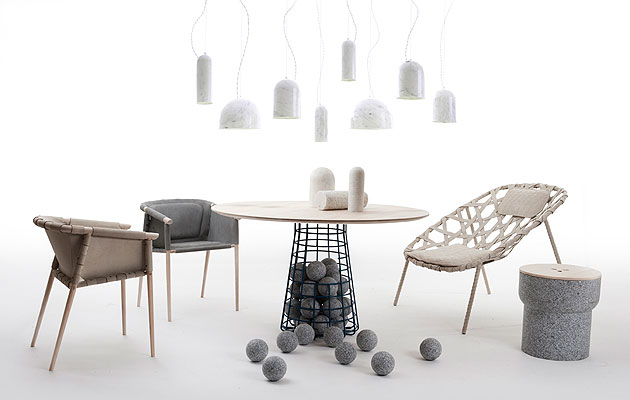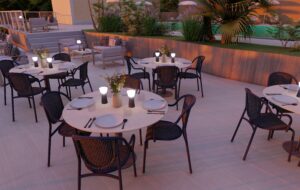|
|
||
|
Since the success of his Heavy range of concrete lights, Benjamin Hubert has consistently focused on materiality, industry and process-led design. Three years on, he defines his inaugural collection for De La Espada as “industrial craft” – a prime manifestation of his credo. As well as the inter-relationships between the materials, which include timber, granite, marble and leather, Hubert says it is craftsmanship that ties the collection together. “A lot of my previous products used industrialised processes, such as pressings, mouldings, stampings and castings, but this collection is much more handmade.” The Cargo dining chair, for example, consists of handcrafted, self-supporting leather panels, attached with mechanical fixings to an ash frame. It borrows from the automotive industry, he says, “in which leather is used in a more flexible way”. This approach of bringing an industrial perspective to a known material is also reflected in the lounge chair, Coracle. It comprises a seat of interwoven leather, supported by a steel frame that is wrapped in handstitched leather in the style of a sports grip or bicycle handlebars. The Quarry pendant LED light also combines traditional material with industrial precision. Made of hand-turned marble with a roughly finished interior, it features exact geometric shapes. “I wanted to leave the interior in that raw state, with the outside highly polished,” Hubert says. “Showing the roughness of the material makes it more interesting and tactile.” The collection is completed by Silo, the turned granite side table, and the Gabion dining table, which subverts the idea of hiding ballast in central-stem table designs – in a playful take on the engineering elements that share the name Gabion, Hubert uses granite balls as ballast, making them the product’s focal point. “We wanted the structural elements of the table to be its aesthetic, so in a way it wears its structural elements on its sleeve,” the designer says. “And that’s what all the pieces are doing. Whether you notice the maker’s marks in the stone or the mechanical fixings on the chair, you understand immediately how the product is constructed, and that becomes part of its appeal.” While the craft processes are evident in – and intrinsically linked to – the final products, the industrial core of the collection lies in its design language and the control of dimensions. “I’m not interested in style or the way things look – that’s the last thing I think about,” Hubert says. “But the industrial aspect is about pushing the craft to the nth degree and controlling it in terms of measurements and constraints.” Eighteen months in the making, including five months of initial concept work, the collection launched at the London Design Festival’s Tramshed event on 22 September. In typical De La Espada fashion, it is low volumeand high quality. In fact, it is Hubert’s first family of products that are designed to sit together – “a nice mark in the sand,” he reckons.
|
Image London Design Festival
Words Anna Richardson Taylor |
|
|
||





















